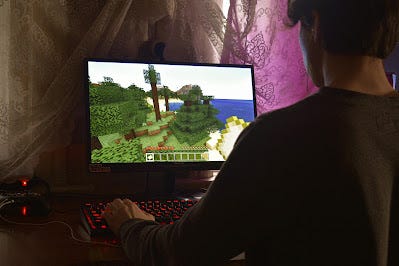2D vs 3D Game Development: Which One Should You Learn First?
 Rev Games Academy
Rev Games AcademyIf you’re thinking about starting a career in game development, you’re probably wondering where to begin. One of the most common questions among beginners is whether to start with 2D or 3D game development. Both paths offer exciting possibilities and can lead to successful careers, but they come with different learning curves, tools, and creative processes.
At Rev Games Academy, we guide our students through both areas, but knowing which one to learn first can help build a stronger foundation. Let’s break down the key differences, advantages, and what’s best for beginners.

Understanding 2D and 3D Game Development
What is 2D Game Development?
2D games use flat graphics, meaning all the action takes place on a two-dimensional plane. These games are typically viewed from the side, top-down, or in isometric perspective.
Examples:
Super Mario Bros.
Angry Birds
Hollow Knight
2D games focus on sprites, animations, and backgrounds. Most mobile games and indie games are built in 2D because of simpler development pipelines.
What is 3D Game Development?
3D games use three-dimensional models and environments. Characters, objects, and scenes have depth and can be viewed from multiple angles. These games usually require more complex programming, 3D modeling, lighting, and physics.
Examples:
Fortnite
GTA V
Assassin’s Creed
3D development is ideal for immersive, large-scale projects but can be overwhelming for complete beginners.
Learning Curve: Which Is Easier for Beginners?
2D Game Development is More Beginner-Friendly
Simpler graphics: No need for complex modeling or rigging.
Easier programming: Less math and physics involved.
Faster results: You can see and play your game quickly.
Cost-effective: Requires fewer resources and smaller teams.
Many beginners find 2D to be a great starting point because it focuses on core game mechanics, logic, and design fundamentals without getting overwhelmed by 3D complexity.
Tools and Software
Here’s how the tools differ:
2D Game Tools:
- Unity (2D Mode): Offers built-in 2D tools, easy for beginners.
3D Game Tools:
Unity (3D Mode): Offers a full 3D engine with physics and lighting.
Unreal Engine: Powerful visuals, used in AAA games.
Blender: Used for 3D modeling and animation.
If you are just getting started and have no prior experience, beginning with Unity 2D is a smart move. It offers a smooth transition later into 3D within the same platform.
Career Goals: What Do You Want to Build?
Your choice also depends on your goals:
Want to make mobile games or indie titles? Start with 2D.
Want to work in AAA studios or create open-world games? You’ll need 3D eventually.
Want to be a solo game developer? 2D games are easier to create alone.
Want to specialize in animation or modeling? Then 3D is your focus.
At Rev Games Academy, we recommend starting with 2D to build confidence, then moving into 3D once you’re comfortable with game logic and design.Explore many Courses in Game Development with us to discover your strengths and interests before choosing your path forward.
Transitioning from 2D to 3D
Many of the skills you learn in 2D — such as scripting, UI design, and gameplay logic — are transferable to 3D development. Once you master the basics, you can easily transition to 3D by learning new components like:
3D modeling
Physics simulations
Lighting and shadows
Camera controls
Our advanced modules at Rev Games Academy include both 2D and 3D projects to give you complete hands-on experience.
What We Teach at Rev Games Academy
At Rev Games Academy, we start students with 2D game development for the following reasons:
It’s less overwhelming for beginners.
You can build and publish a complete game faster.
You focus on understanding game logic, not just visuals.
Once you gain confidence, we introduce 3D projects that push your skills in animation, modeling, and immersive environments. This progressive learning path ensures you’re ready for both indie development and industry-level roles.
Start with 2D, Then Move to 3D
While both 2D and 3D game development are important, we recommend starting with 2D if you are a complete beginner. It’s simpler, more approachable, and lets you focus on gameplay and programming fundamentals. As your skills grow, you’ll naturally want to explore the creative freedom and complexity of 3D development.
Whether your goal is to build your own mobile games or work in a game studio, starting with a strong foundation is key — and that’s what we offer at Rev Games Academy.
Subscribe to my newsletter
Read articles from Rev Games Academy directly inside your inbox. Subscribe to the newsletter, and don't miss out.
Written by
